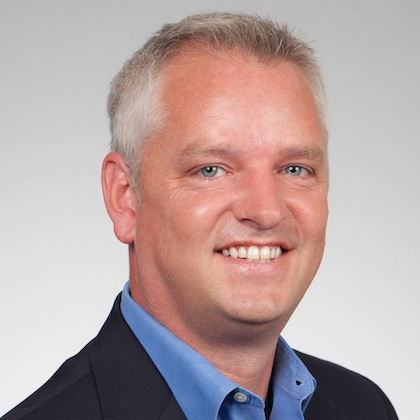As one of the hottest topics in health IT, population health presents numerous challenges. Although population health initiatives seek to assist the greater community, they have to be accomplished one person at a time.
Tribridge Vice President of Health and Life Sciences Damon Auer knows this all too well. In his role at the technology services firm, he oversees everything from cloud-based care coordination to process and systems integration consulting for healthcare delivery, pharmaceutical and medical device organizations. He was crucial in the development of Tribridge Health360, a population health management solution.

Becker's Hospital Review talked to Mr. Auer about everything from consumer engagement to why the care experience should not feel like the Department of Motor Vehicles.
Editor's note: Responses have been edited lightly for length and clarity.
Question: What are a few trends you're seeing at the intersection of health IT and population health?
Damon Auer: One of the things I'm seeing is [health] systems move away from the traditional patient-centered view toward a consumer view.
Another trend — one we imagined would happen several years ago regarding consumer-focused engagement — allows a provider or payer to personalize care intentionally for individuals. It's the oxymoron of having to accomplish population health initiatives one person at a time. We have to take a micro approach to get to the macro objective.
The other thing we're seeing is although population health has been a largely U.S. phenomenon due to the ACA, in the last six months we have seen an increasing volume of queries from countries all over the world. The interest is related to some of the technology tools we're deploying in the United States, and they're generating interest in other parts of the world. Our Health360 Care Coordination solution went live in the Microsoft AppSource, which makes it visible to more than 25 different countries throughout the world. It has applicability in all sorts of populations.
Q: Speaking of Health360, you played a key role in developing it. Could you discuss the solution and the development process?
DA: We conceived Health360 several years ago while working with the Health Solutions group at Microsoft. We asked a group of tech-savvy clinicians, "What comes next for healthcare providers after we stabilize the EHR?"
Not surprisingly, we landed on the idea of population health. It became clear we needed systems to identify people. Then we needed tools to get their attention — marketing and communication tools, essentially. Once we got their attention, we needed to tools to create a care plan that's comprehensive and unique to that person. It has to include what we know clinically and what we can learn behaviorally, socially and via their community. The care plan then becomes the basis for coordinating all of the care team's activity over time.
Much of the functionality we're discussing is stuff that has already been created for us in customer relationship management solutions. We decided to create Health360 on that Microsoft Dynamics 365 backbone.
Q: You regularly collaborate with Microsoft's Healthcare Strategy teams to develop new solutions. Could you discuss that relationship and a few of the solutions you've worked on?
DA: There are several healthcare innovation teams at Microsoft. The most interesting group right now is the Microsoft Healthcare NExT group in their [research and development] unit. That group recently relaunched HealthVault, a personal health record in the cloud system that Microsoft had out in the market. It was way ahead of its time. What it aims to do is be the consumer health engagement app and cloud service that will allow any consumer to easily collaborate with their healthcare provider via a small screen app called HealthVault Insights.
Q: What excites you most about the future of health IT?
DA: What excites me most is our ability to personalize care experiences for everyone. We need technology that operates at a significant enough scale and [creates] a compelling enough consumer and care team member experience. The only way we can do that is with technology that's simple, easy to use, will appeal to any of us as a consumer and also makes life a lot better for the care coordinators we're collaborating with.
I'm excited about a future that's a different care experience than what many of us grew up with. It shouldn't feel like we're at the DMV.

